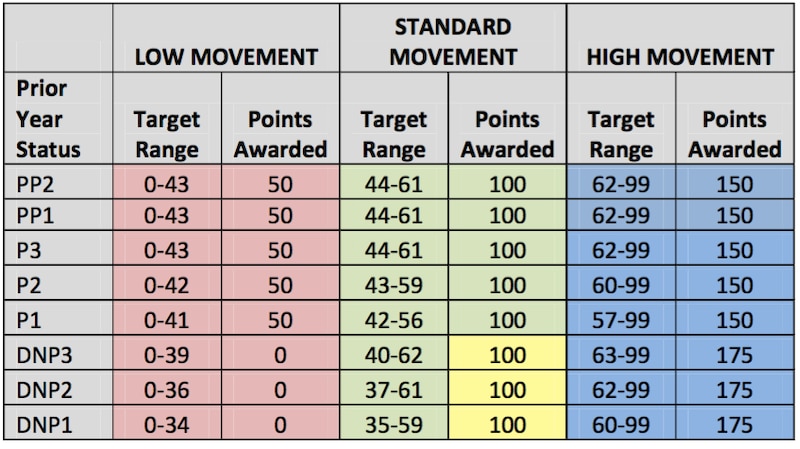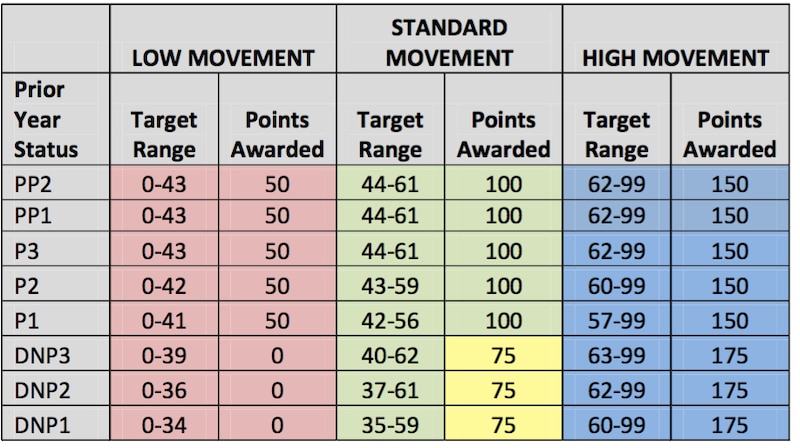Indiana education officials on Wednesday will make key decisions about how schools should be measured on the newest element of the state’s A-F grading system.
As the state shifts to a grading system that now factors whether students improve or lose ground on the ISTEP test from one year to the next, the Indiana State Board of Education will convene to discuss the details.
Specifically, the board is considering questions such as how to handle scenarios where students pass the test but get a lower score than the prior year. Also at issue are students who got the same score as the previous year but still failed to pass.
While schools have historically gotten letter grades based mostly on how many of its students passed the state’s standardized ISTEP exam, the new system — used for the first time this year — will weigh ISTEP passing rates equally with test score improvement and add in extra factors, such as graduation rates, for high schools.
The two proposals before the board this week are two different ways that the state can assign “growth points” based on whether students showed improvement from one year to the next.
Last year state board members raised concerns that a draft version of the growth point system would let students who passed but lost ground from the previous year still earn points, while students who went from failing to above-average couldn’t earn the maximum number of points.
Chalkbeat took a look at how the growth point system could work earlier this year:
Once results from the 2016 ISTEP are calculated, the state will use a chart, called a “growth table,” to determine how many “growth points” a student has earned. Points are awarded based on a student’s score from the previous year and whether their new scores improved, stayed the same or declined.
The two new tables have corrected the latter issue — students who go from from the very lowest percentile of scores to the very highest are rewarded for the big jump with the most number of points possible, 175. 100 points is the baseline awarded to schools that improve student scores a full grade level from one year to the next, meaning a student who passed last year passes the next year, too.
But both proposals currently give 50 points to kids who passed but got lower scores than the year before.
State board spokesman Marc Lotter said that’s a way the board could potentially recognize schools that have students who are in the right range but still need to get better. Zero points would be the “worst of the worst” situations, Lotter said, where students that failed one year got even lower scores than the year before.
“50 points is an F on a 100-point scale,” Lotter said. “The zero-point category is reserved for a child not passing and they didn’t grow a year, they got worse off. As educators we cannot have that, it’s not OK.”
The difference between the two proposals is fairly minor. In one instance, all students that scored essentially the same from one year to the next would earn 100 points, whether they passed the test or not.

In the other, students that scored the same but passed would earn 100 points, and those that scored the same but failed would get 75 points.

“You as a teacher, you as a school moved that child along one year, but you aren’t helping them close the gap to achieve proficiency, so under option 2, if the board chooses that, it’s saying we’re going to give you a ‘C,’” Lotter said.
One potential upside of the new proposals versus an older draft version is the distribution of grades they could produce.
Running examples calculations based on 2015 ISTEP scores and the new growth measure, the two new tables would give A-grades to 23 percent and 22 percent of schools and F-grades to 6 and 7 percent of schools. The majority of schools in both proposals would get Bs and Cs. Using the draft version of the table, just 9 percent of schools would’ve gotten A-grades and 14 percent would’ve gotten Fs.
But that’s a pretty big change from the state’s old A-F calculation, used for the last time in 2015. Under that system, where ISTEP passing rates are the largest data point and growth is not factored in, state officials estimate 3 percent of schools would’ve received As in 2015 and 32 percent would’ve received Fs.
For now, calculations using growth only apply for schools with grades 3-8. High schools won’t be able to include growth data until 2017 because the 10th-grade ISTEP will be given for the first time this year.
The board is expected to vote Wednesday to approve one of the proposals, which will then be put up for the public to weigh in. A final table will be voted on at the April meeting. The percentile “target ranges” on the tables are still expected to change as the state builds up it’s test data, Lotter said, so what’s more important is a decision on the broader categories and point values.
“If I was an educator, I wouldn’t get too overly focused on the target ranges yet,” Lotter said.
The board will also hear updates on the state’s high school diploma overhaul and a study conducted to determine the validity of last year’s ISTEP test.

